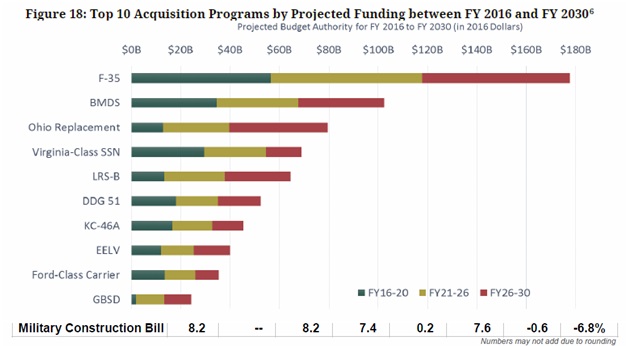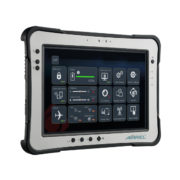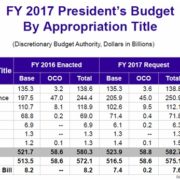As images of bloody bodies flow in from Brussels and Pakistan, we once again search for an appropriate response to the horror of a successful terrorist attack. Some people call for revenge. Others declare liberties are a luxury that we can no longer afford. Many seem stunned into inaction. What are we to do?
At AMREL, we watch these events with keen interest. Of course, like all citizens, we are concerned about terrorism, but we also wonder what our role will be in future counter-terrorism efforts. We have been supplying warfighters and security personnel with rugged mobile computing solutions for over 30 years. What will we be called on to supply next? Will we be asked for our mobile biometric devices? Our Defense solutions? Our Public Safety equipment? Something completely new?
I watch these events with a sickening sense of familiarity. I lived in Israel at a time of intense terrorist activity. No country in world has been more subjected to terrorism than Israel. None take their security more seriously than Israel does.
While living there, I had an opportunity to see firsthand a country fighting terror every day. I also had numerous conversations about terrorism with Israeli intelligence, government, and military professionals (this isn’t unusual; Israel is a small country where everyone knows everyone else).
The following represents some of the lessons that I learned about terrorism while living in Israel.
Even under continuous terrorist threat, it is possible to have a free society. Of everything I experienced in Israel, this was the thing that impressed me the most. Despite a wide range of security measures, and a state of constant hyper-vigilance, Israel enjoys a robust, free-wheeling democracy. Israel may have an impressive multi-layered security regime, but Israelis did not seem intimidated by it in the slightest. Certainly, it did not restrain them from loudly expressing their opinions about the government in general and politicians in particular.
Of course, I write this as someone who is not an Arab. Arab citizens bitterly complain of discrimination. Jews counterclaim that Arabs living in Israel are freer there than they are in any other country in the Middle East.
I am not qualified to discuss the experiences of Israeli Arabs. If you wish to learn about their life in Israel, I strongly recommend the outrageously funny television show, Arab Labor. Written by an Israeli Arab, it humorously explores the bizarre experiences of living as suspected minority in a society dominated by terrorist fear. You can watch it online in a number of places, including here.
Most of impositions to liberty seem relatively trivial. In Israel, I had to carry an internal passport at all times. Can you imagine the howls from both the Left and the Right if the federal government tried to impose a system of national identification here? It’s not that Israelis are less jealous of their liberties than Americans (if anything, they distrust their government more), it’s just that they’re more accepting of the necessity of security measures. Carrying an internal passport all the time is really no different than how I teat my drivers license in the US.
Profiling works, just not in the way that you think it does. I have heard self-appointed “security experts” envy the Israeli freedom in profiling Arab minorities.
Of course, Israeli officials target Arabs for extra security measures. And young European women as well. Several years ago there was a highly publicized incident in which a terrorist tricked a young Irish woman into carrying a bomb aboard an airplane. Ever since then, Israeli security at airports carefully screens single young women. I knew one foreign visitor who had an Israeli acquaintance accompany her to airports and pretend to be her boyfriend, specifically so she could avoid the extra level of scrutiny.
Do not assume profiling will not apply to you, because…
Everybody is profiled. It’s very simple. If security only subjected Arabs to extra inspections, then terrorists would use people who didn’t look like Arabs. If security places restrictions on young men, then terrorists use women. If both young men and women are subjected to extra scrutiny, then terrorists would use old folks.
Several times a year, a high level representative of a church or government complains to a local Israeli newspaper about the “outrageous” security measures he endured at an Israeli airport. I always laugh at these tirades, because the measures he describes are the exact same ones that I and everyone else must undergo.
The next time you see a grandmother in a wheelchair being searched at an airport, don’t bemoan it as political correctness gone amuck. It’s simple common sense. Security personnel have learned what the classic cartoon Pogo once so wisely observed, “We have met the enemy, and he is us.”
Bigotry is a poor counter-terrorist strategy. Very few genuine counter-terrorists experts in the United States embrace the view that all Arabs or all Moslems are our enemy. They are fully aware that Arabs and Moslems are the primary victims of radicalized Islamic terror, and serve as our allies (if uneasy ones) in the war against terror.
In Israel, “They all want to kill us” is an extremely popular view. However, this hasn’t stopped Israeli military and intelligence from cooperating with Palestinian authorities on counter-terrorists actions. It’s not unusual to read a complaint from the Israeli Prime Minister’s office about the Palestinian leadership inciting violence, while in the same newspaper the head of an Army unit is quoted as praising his Palestinian counterpart for a successfully destroying a terrorist cell.
Painting all Moslems or Arabs with the same terrorist brush turns assets into liabilities and converts allies into enemies. We have to be smarter than that.
Kabuki theater works. Waiting in line to enter a mall while some under-paid guard searches backpacks and women’s purses, someone will inevitably comment that these inconvenient security measures are stupid and pointless. No determined terrorist would be deterred by these farcically ineffective procedures.
Except that they are. I’ve read interviews with would-be suicide bombers and other terrorists about their thought processes as they prepare to attack. A major factor in their consideration is the same silly security measures that are widely mocked. What seems stupid to us, is intimidating to a terrorist.
Terrorism is the new normal. While writing this article, I talked to a people who had traveled through the Philippines, Singapore, Indonesia, and South Korea. Each of these countries has experienced problems with terrorism and has instituted counter-measures.
Along with cell phones, television, and the internet, magnetic wands and metal detectors are the technologies that will define our time.
Terrorists adapt. Every few years Israel experiences waves of terror. A while back, suicide bombers were a problem. At the time, the problem seemed insurmountable. None of Israel’s traditional security methods seemed effective.
So, Israel developed new security methods. Among other things, they built a highly controversial security wall to keep out terrorists. Israelis increased surveillance on possible terrorists and with more help from the Palestinian security services than they like to admit, this particular wave of attacks has been thwarted. Deaths and incidents died down.
And then they started again. It hasn’t gotten much publicity in this country, but Israel is undergoing what is sometimes referred to as the “Lone Wolf” Intifada. Individuals, seemingly unconnected to any organization, are randomly stabbing people. In the last 6 months, 34 Israelis have been killed and 404 have been wounded.
Just like with earlier wave of terrorism, no one seems to know what to do. No one is sure what will be effective countermeasures. Despite the anxieties being expressed now in the Israeli media, I have no doubt that Israel’s highly motivated security establishment will eventually devise effective defense actions.
Unfortunately, their enemies will then figure out a new way of attacking them. In a war of terror, the side that is the most innovative and flexible will always have the advantage.












